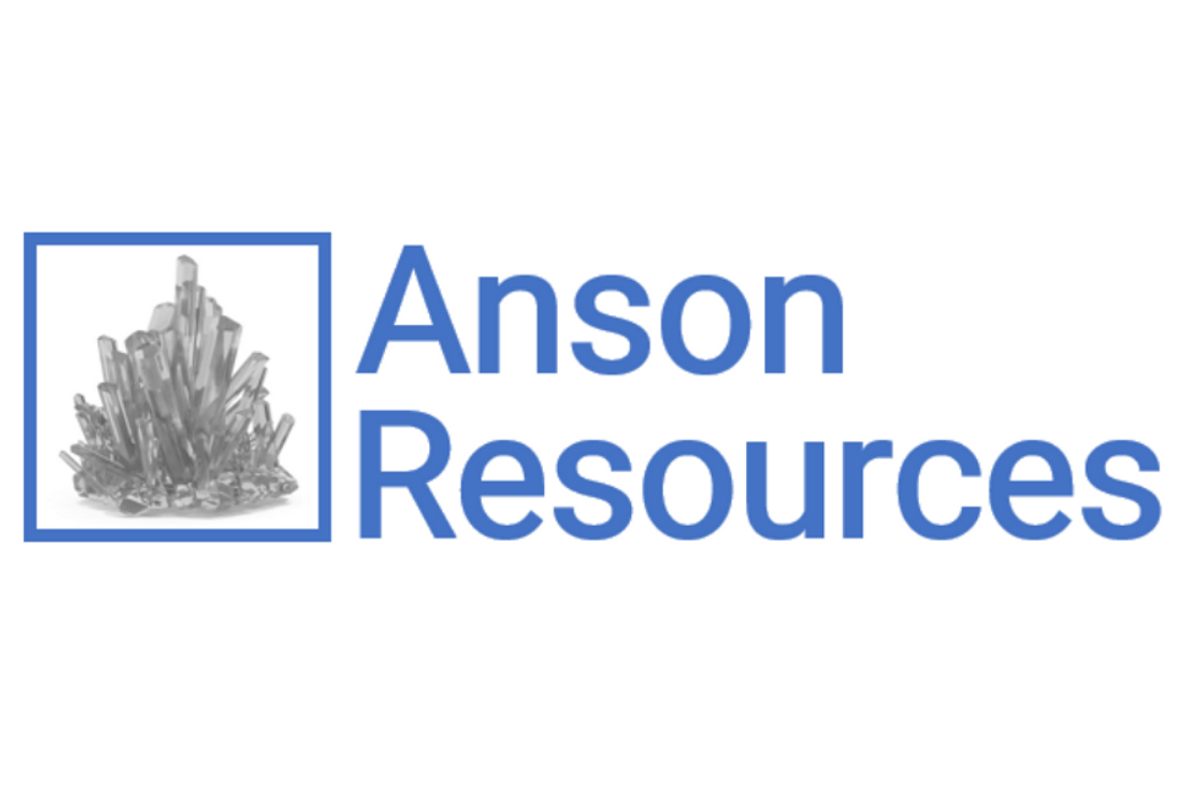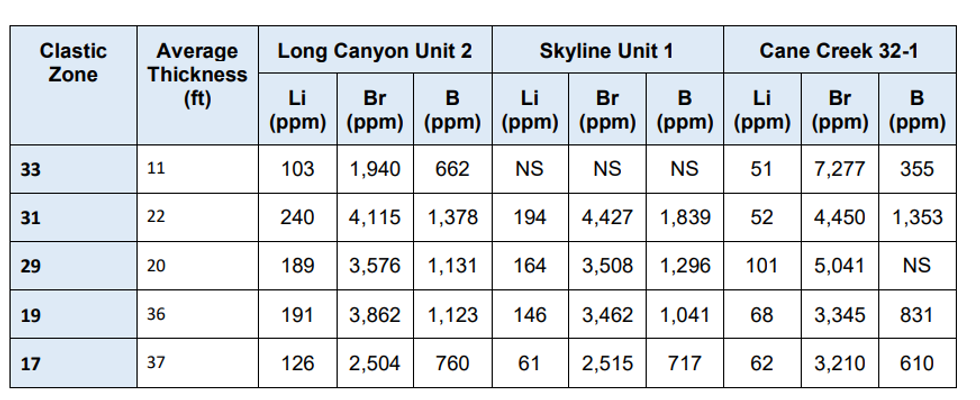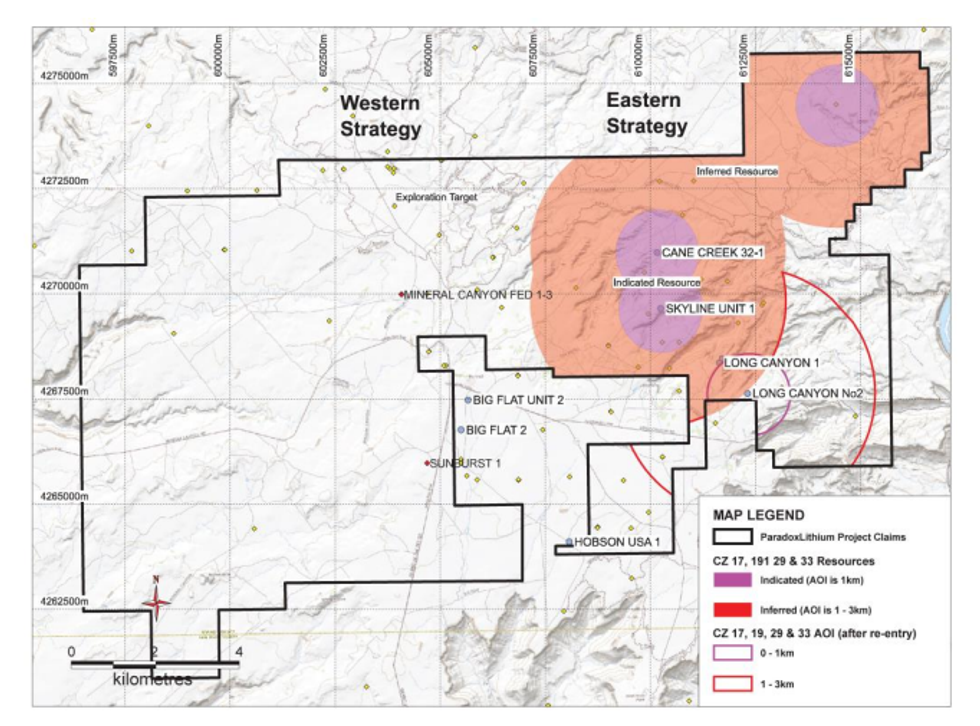
- NORTH AMERICA EDITIONAustraliaNorth AmericaWorld
August 04, 2022
Li assays increase by up to 70% in drilling of Clastic Zones at Long Canyon No. 2 Well
Anson Resources Limited (ASX: ASN, ASNOC, ASNOD) (Anson or the Company) is pleased to announce further increases in lithium grades, of up to 70%, from drilling of the Clastic Zones at the Long Canyon No. 2 well, as part of the Company’s ongoing Resource expansion drilling campaign at the Paradox Lithium Project (the Project) in Utah, USA.
Highlights:
- Anson has delivered a further major increase in lithium assay grades from its ongoing Resource expansion drilling campaign at the Paradox Lithium Project, in Utah, USA
- Drilling of the Clastic Zones at the Long Canyon No. 2 well has returned Li grades up to 70% higher than those previously reported in fast-track assays last month
- Latest lithium (Li) and bromine (Br) results at Long Canyon No. 2 well include:
- 103ppm Li, 1,940ppm Br and 662ppm B in Clastic Zone 33 (11ft thick)
- 189ppm Li, 3,576ppm Br and 1,131ppm B in Clastic Zone 29 (18ft thick)
- 191ppm Li, 3,862ppm Br and 1,123 B in Clastic Zone 19 (38ft thick)
- 126ppm Li, 2,504ppm Br and 760ppm B in Clastic Zone 19 (46ft thick)
- Latest results also indicate that the lithium grades increase from north to south within the Project area
- Upgraded JORC Indicated and Inferred Resource planned to be confirmed in near future, and will include;
- The thicker Mississippian Units (187ppm Li, 3,793ppm Br);
- Clastic Zones 17, 19, 29 and 33 not included in the existing Paradox Resource; and
- There is also potential for further Resource expansion via targeted drilling in the western areas of the Project
- The Resource upgrade will be included in the Definitive Feasibility Study currently being completed
These latest results come from additional and larger brine samples taken from recent drilling of Clastic Zones 17, 19, 29 and 33 at Long Canyon No. 2 (see Table 1), and have returned an increase in lithium assay of up to 70% in some horizons compared to initial fast-tracked assay results at the Clastic Zones at Long Canyon No. 2 reported last month (see ASX announcement 18 July 2022).
These lithium assays also confirm that the lithium values increase from north to south in the Project area, as was previously identified in drilling of the Clastic Zone 31.
Anson has located the extraction pads in optimal locations, near the intersection of the geological structures, Robert’s Rupture and the Cane creek Anticline. These locations provide vertical porosity at a shallower depth for brine extraction. The extraction bores are approximately 1.5 km southwest of the Long Canyon Unit 2 well.
JORC resource upgrade
The additional assays for the Clastic Zones at Long Canyon No. 2 are shown in Table 1 along with assays from the Skyline and Cane Creek wells.
Based on these results, the Company plans to confirm a JORC resource upgrade incorporating all of the Clastic Zone horizons and the Mississippian Units to add to the Project’s existing JORC resource (see ASX Announcement 11 May 2020). This upgrade will result in these clastic zones extending the Indicated and Inferred Resource to the southern boundary of the Project area, and bringing existing Inferred resources and Exploration Target into Inferred and Indicated resources, see Figure 1.


The Mineral Resource may be further increased by re-entering historic holes in the western areas of the Project which are currently classified as Inferred Resources or Exploration Target, due to a lack of data, see Figure 1. This has potential to deliver a significant increase in the block model resource tonnages and grades for the additional Clastic Zones, where there has been no recorded assays in these locations.
Click here for the full ASX Release
This article includes content from Anson Resources Limited , licensed for the purpose of publishing on Investing News Australia. This article does not constitute financial product advice. It is your responsibility to perform proper due diligence before acting upon any information provided here. Please refer to our full disclaimer here.
ASN:AU
The Conversation (0)
08 June 2022
Anson Resources
Developing a Near-Term Clean Energy Project in Utah
Developing a Near-Term Clean Energy Project in Utah Keep Reading...
Latest News
Latest Press Releases
Related News
TOP STOCKS
American Battery4.030.24
Aion Therapeutic0.10-0.01
Cybin Corp2.140.00
